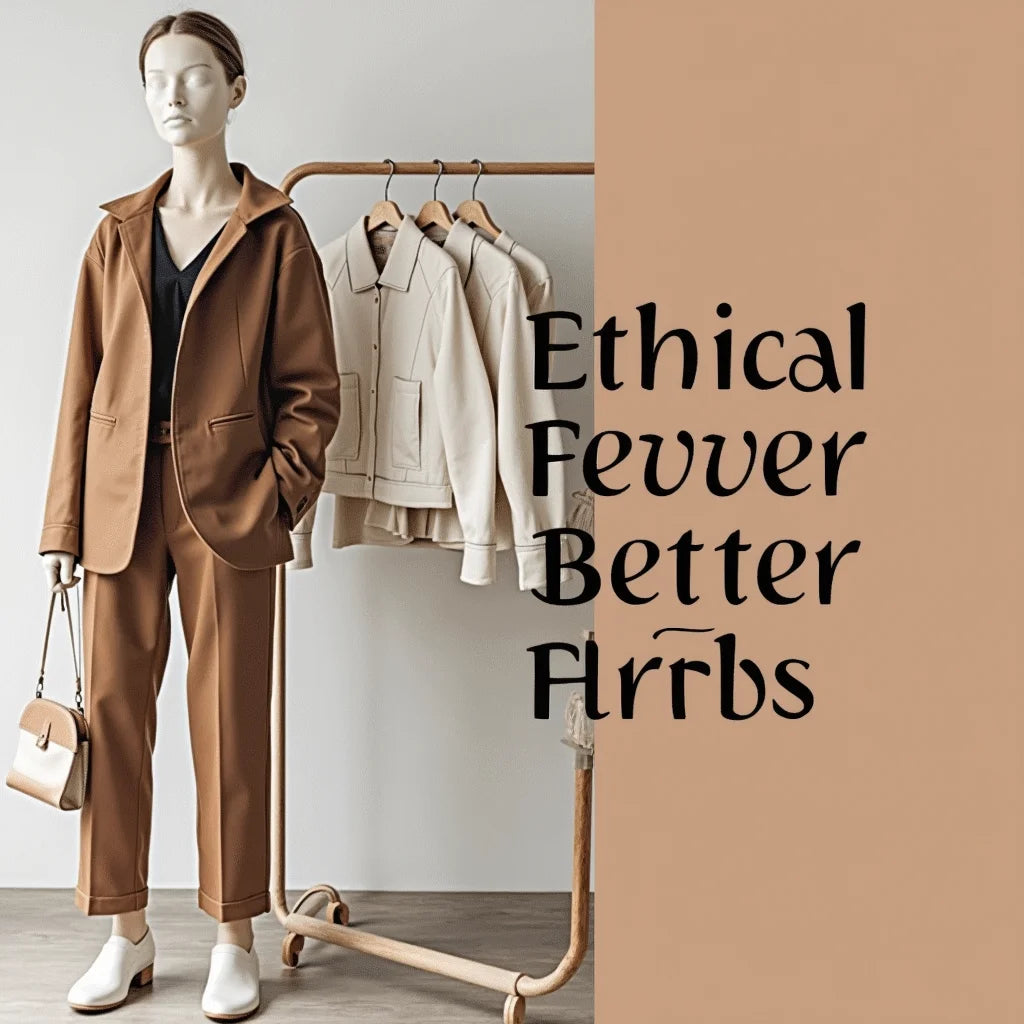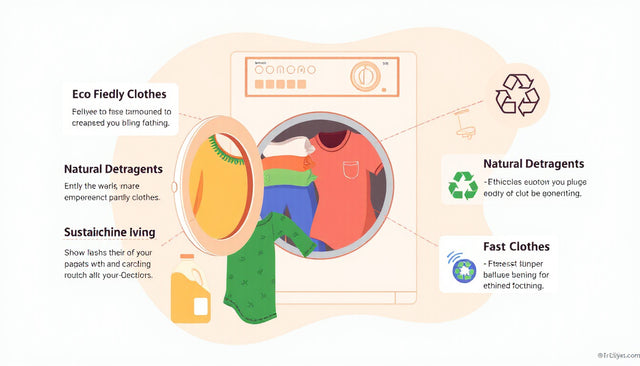Updated on: 2025-10-24
Table of Contents
- Product Spotlight: Ethical Clothing You Can Wear with Confidence
- Ethical Clothing Myths and Facts
- Ethical Clothing: Frequently Asked Questions
- Final Recommendations for Ethical Clothing and Sustainable Fashion
- Ethical Clothing Q&A: Reader Questions Answered
- About the Author: Ethical Clothing and Sustainable Fashion Editor
Ethical clothing is more than a trend; it is a framework for responsible production, fair labor, and lasting style. Within the first steps of your shopping journey, you can assess how a garment supports sustainable fashion and fair trade clothing principles. This article explains what ethical clothing means, how to verify claims, and how to balance materials, price, and performance. You will gain a practical checklist, learn how slow fashion reduces waste, and discover eco-friendly apparel options that align with your values.
Product Spotlight: Ethical Clothing You Can Wear with Confidence
Ethical clothing focuses on people, planet, and product quality. Look for traceable supply chains, verified factory conditions, and materials selected for lower environmental impact. Certifications such as Global Organic Textile Standard (GOTS) and Fair Trade Certified signal higher labor and environmental standards. Low-impact dyes, water stewardship, and responsible packaging further reduce the overall footprint.
Thoughtful design choices also matter. Timeless silhouettes, reinforced stitching, and fabric weights suited to everyday use extend garment life and reduce replacement cycles. This supports slow fashion by shifting attention from high turnover to long-term wear.
Explore pieces that highlight these standards across categories. For graphic tees made with certified organic cotton, consider the selection in Organic gamer tees. If you enjoy science and creativity themes, review the Nerd tees for designs printed on eco-conscious bases. Fans of vintage aesthetics can browse Retro organic tees that blend classic style with responsible materials. For daily utility, reusable bags reduce single-use packaging; explore Organic cotton totes crafted from durable fibers.
Material Standards That Signal Ethical Clothing
Prioritize natural and certified materials. Organic cotton reduces pesticide exposure, and GOTS certification covers the entire textile process, from fiber to finished garment. Recycled fibers can cut resource use when sourced transparently. Look for responsible wool and linen with verified animal and land stewardship. When considering synthetics for performance, choose recycled options and confirm responsible dyeing and finishing. Ethical clothing made in the USA can offer enhanced traceability and local oversight, especially when factories publish wage and safety practices.
Design and Durability Benefits of Ethical Clothing
Durability is a core value of ethical clothing. Features such as heavier knit weights, double-needle hems, and pre-shrunk finishes support long wear and consistent fit. Neutral colorways and seasonless designs reduce the urge to replace items as trends shift. This approach works well for affordable ethical clothing brands for women and men alike; by standardizing core cuts and reducing seasonal churn, brands can invest more in wages and materials while keeping prices steady.
Ethical Clothing Myths and Facts
- Myth: Ethical clothing is always expensive. Fact: Responsible basics with streamlined designs can be competitively priced, especially when you factor in longevity and repairability.
- Myth: Fair trade clothing and ethical clothing are identical. Fact: Fair trade focuses on labor standards and community impact; ethical clothing includes labor plus environmental practices and product durability.
- Myth: Natural fibers are always ethical. Fact: Fiber choice is only one factor; farming practices, dye houses, and factory conditions also determine whether a garment is ethical.
- Myth: If a brand plants trees, it is ethical. Fact: Offsets can help, but ethical clothing requires credible supply chain governance, verified wages, and responsible production.
- Myth: Ethical clothing limits style. Fact: Slow fashion encourages creativity through quality materials, versatile cuts, and thoughtful graphics that endure.
Ethical Clothing: Frequently Asked Questions
What is ethical clothing?
Ethical clothing refers to apparel produced with fair labor practices, safer materials, and responsible environmental management. It integrates sustainable fashion principles and often aligns with fair trade clothing frameworks. It promotes transparency, product longevity, and reduced waste.
How can I tell if a clothing brand is ethical?
Check for credible certifications, public supplier lists, and third-party audits. Review material breakdowns, dye and finishing processes, and repair or take-back programs. Transparent wage and safety policies, along with clear environmental targets, strengthen a brand’s ethical profile.
Is fair trade clothing the same as ethical clothing?
Fair trade clothing emphasizes fair wages, safe working conditions, and community investment. Ethical clothing includes those elements and also evaluates material sourcing, water and chemical use, and product durability. The terms overlap but are not identical.
Can ethical clothing be affordable?
Yes. Focus on timeless cuts and high-wear items that replace multiple trend pieces. Seek brands that minimize overhead, publish costs, and offer core styles year-round. Buying fewer, better items is the most effective way to make ethical clothing budget-friendly.
Final Recommendations for Ethical Clothing and Sustainable Fashion
Move from intent to action with a simple plan. Ethical clothing is achievable when you verify claims, buy selectively, and care for garments well. These practices support eco-friendly apparel choices and reduce long-term costs.
- Prioritize essentials you will wear frequently. Choose neutral colors and resilient fabrics.
- Check for GOTS, Fair Trade Certified, or equivalent proof points. Verify, do not assume.
- Compare cost per wear rather than shelf price. Durability often reduces total spend.
- Favor small, transparent batches over trend cycles. This aligns with slow fashion.
- Use garment care to extend life: cold wash, line dry, and spot-clean when possible.
How to evaluate an ethical clothing brand
Use this concise process to assess ethical claims:
- Step 1 — Supply chain visibility: Look for named factories, region details, and audit summaries.
- Step 2 — Material integrity: Confirm organic, recycled, or responsibly sourced fibers with certification IDs.
- Step 3 — Labor and wages: Seek wage benchmarks, health and safety policies, and grievance mechanisms.
- Step 4 — Environmental practices: Review dyeing, water use, wastewater treatment, and chemical management.
- Step 5 — End-of-life: Check for repair programs, take-back options, and recyclability information.
Smart care to extend garment life
Care is part of ethical clothing. Wash less, and when you do, use cold water and mild detergents. Air dry to reduce energy use and protect fibers. Mend small issues early to prevent larger repairs. Store garments in breathable spaces to prevent damage. These habits increase longevity and reduce waste.
Ethical Clothing Q&A: Reader Questions Answered
Which fabrics align with slow fashion?
Organic cotton, linen, and responsibly sourced wool are strong choices for everyday wear and durability. Recycled polyester can work for performance needs when its source and dye processes are transparent. Prioritize fabrics with verifiable standards and minimal chemical residue.
Do small batches reduce waste?
Yes. Smaller production runs help brands align inventory with demand, which reduces overstock and end-of-season disposal. When combined with timeless designs, small batches support slow fashion and lower environmental impact.
What certifications matter most?
GOTS for organic textiles and Fair Trade Certified for labor are widely recognized. Additional programs that track wastewater, chemical inputs, and emissions strengthen credibility. Select labels that provide scope, audit frequency, and renewal dates for clarity.
About the Author: Ethical Clothing and Sustainable Fashion Editor
Design Delight Studio Design Delight Studio
Design Delight Studio Design Delight Studio researches ethical clothing, sustainable fashion, and practical product standards for conscious shoppers. The team specializes in clear frameworks that help readers verify claims and build long-lasting wardrobes. Thank you for reading, and feel free to explore more responsible styles at your own pace.






















0 comentarios